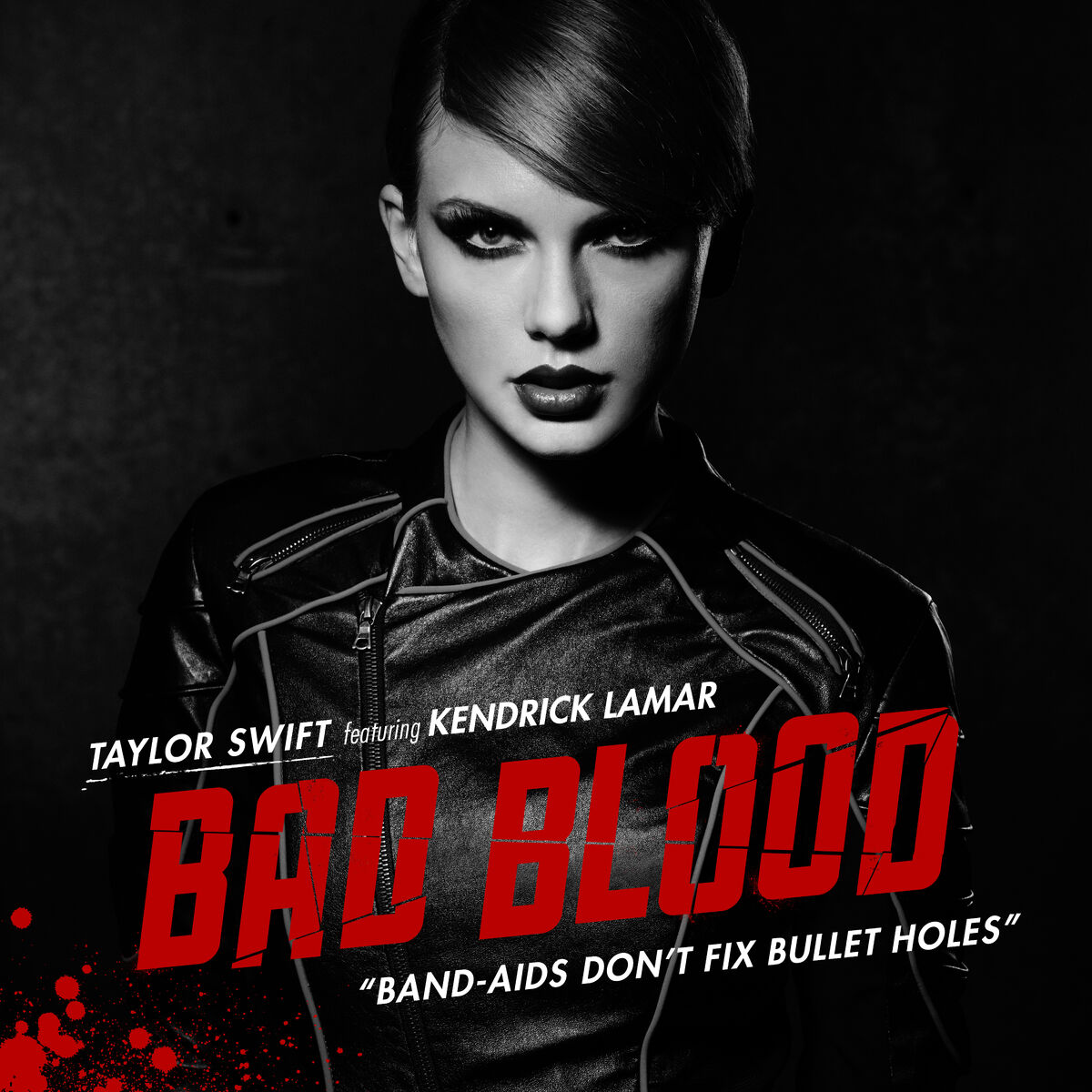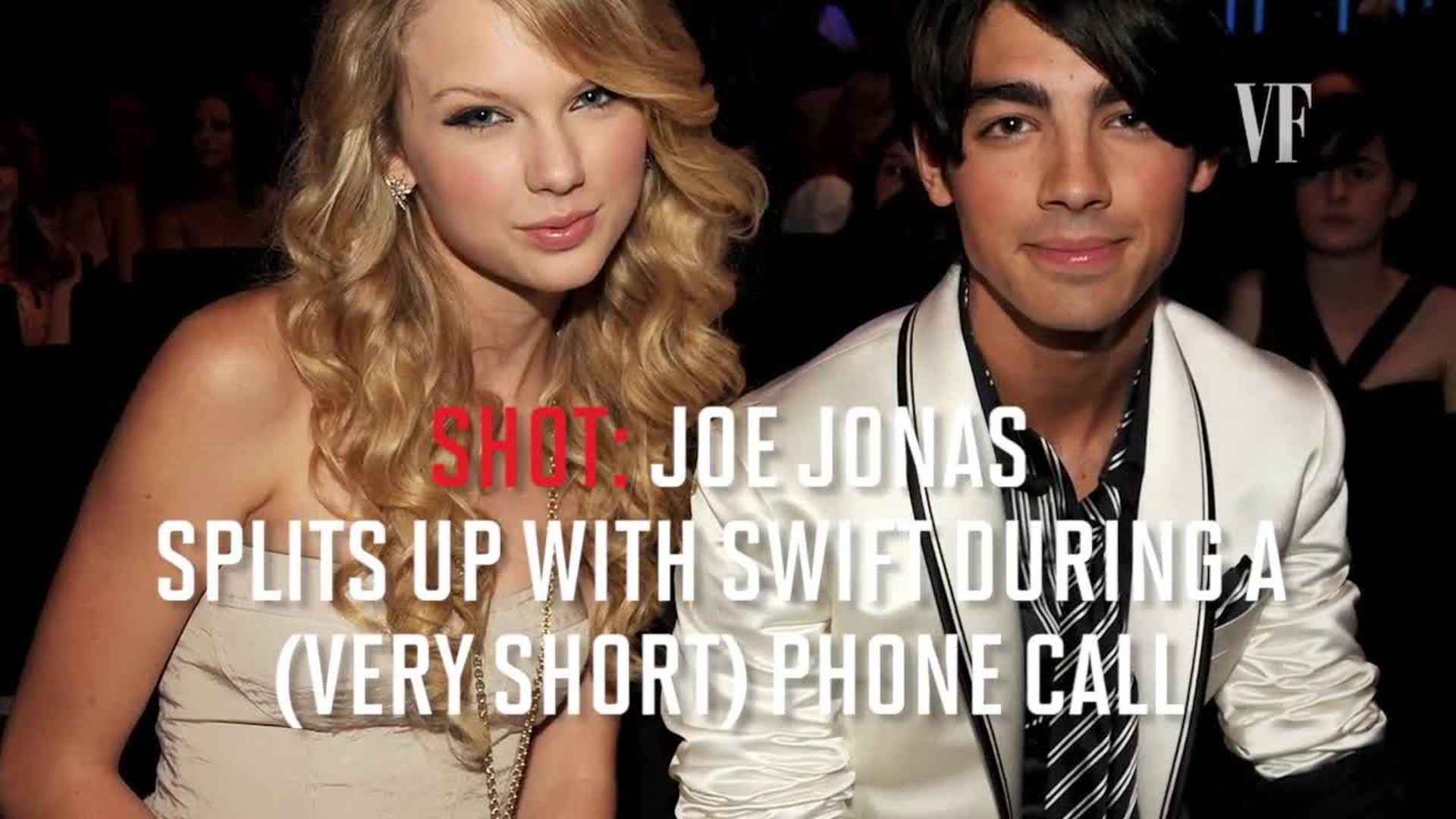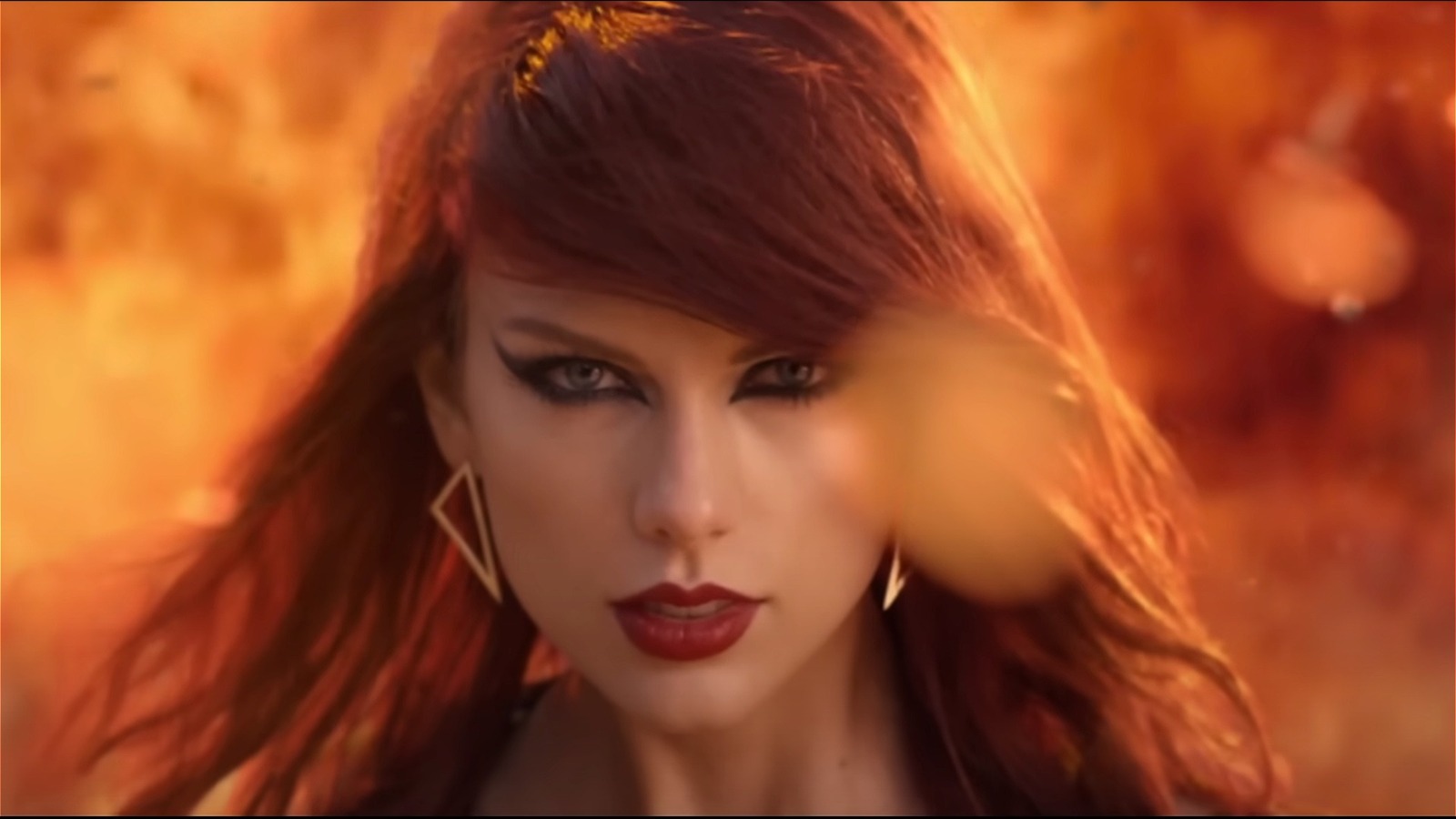Who Did Taylor Swift Write Bad Blood About? Unpacking The Iconic Feud
Detail Author:
- Name : Prof. April Casper DDS
- Username : lamont01
- Email : pspencer@goldner.com
- Birthdate : 2002-07-28
- Address : 664 Josh Via Feestshire, UT 64867-4099
- Phone : 1-281-621-7217
- Company : Torphy-Rosenbaum
- Job : Credit Checker
- Bio : Illum laudantium commodi aut blanditiis ipsa. Ad molestias maxime ea. Natus minus omnis aut ipsum ut.
Socials
facebook:
- url : https://facebook.com/christina83
- username : christina83
- bio : Eaque quod quasi laudantium in vel fuga eos.
- followers : 1264
- following : 2670
instagram:
- url : https://instagram.com/cwilkinson
- username : cwilkinson
- bio : Fugit odit quam occaecati fugit. Dolorum quos sed ipsam eius perferendis. Et aut est libero ad.
- followers : 6698
- following : 399
tiktok:
- url : https://tiktok.com/@wilkinson1999
- username : wilkinson1999
- bio : Quia consequuntur nemo est sed. Iure ut dicta nobis hic.
- followers : 931
- following : 2733
linkedin:
- url : https://linkedin.com/in/christina_wilkinson
- username : christina_wilkinson
- bio : Unde qui tempora sequi ipsam qui.
- followers : 2703
- following : 2382
twitter:
- url : https://twitter.com/christina_id
- username : christina_id
- bio : Molestias expedita minus et est. Iure eveniet aut sit odit.
- followers : 6006
- following : 362
The moment Taylor Swift released her music video for "Bad Blood," it sent shockwaves through the pop culture world, didn't it? Very quickly, everyone started talking, wondering just who this powerful, visually striking anthem was aimed at. It wasn't just a song; it was, you know, a full-blown cinematic event, packed with famous faces and a clear message of betrayal. So, it's almost like a puzzle, isn't it, trying to piece together the real story behind such a public declaration?
For fans and casual observers alike, the question "Who did Taylor Swift write Bad Blood about?" became a hot topic of conversation. The lyrics themselves, filled with imagery of a fractured friendship and a dramatic falling out, seemed to point directly to a specific individual. This wasn't just a general breakup song; it felt deeply personal, almost like a direct challenge, and that, too, made people lean in and want to know more.
When celebrities have very public disagreements, it can sometimes feel as if different "identities" or versions of their story are presented to the world. It’s a bit like watching a play where each character has their own script, even if they are, you know, reacting to the same events. This song, in particular, really brought that sense of differing perspectives to the forefront, sparking endless speculation and, you know, a lot of debate.
Table of Contents
- Taylor Swift: A Quick Look
- Unraveling the "Bad Blood" Mystery
- The Public Fallout: What Happened Next?
- The Aftermath and Public Perception
- Why "Bad Blood" Still Matters
- Frequently Asked Questions About "Bad Blood"
Taylor Swift: A Quick Look
Taylor Swift, a name known across the globe, has truly made a significant mark on the music industry. Born in West Reading, Pennsylvania, she moved to Nashville, Tennessee, at a young age to pursue her musical dreams, which, you know, really paid off. She signed with Big Machine Records in 2005, becoming the youngest artist ever signed by the Sony/ATV Music publishing house.
Her career began in country music, but she quickly transitioned into pop, breaking records and collecting numerous awards along the way. She's known for her narrative songwriting, which often draws from her personal life and, you know, really connects with her audience. Her ability to tell a story through her songs has earned her a fiercely loyal fanbase and, arguably, a lasting legacy.
Taylor Swift is not just a singer; she's also a powerful businesswoman and a cultural icon. She has used her platform to advocate for artists' rights and, you know, various social causes. Her impact goes beyond music, influencing fashion, media, and, you know, even political discourse, which is pretty amazing when you think about it.
Personal Details & Bio Data
| Full Name | Taylor Alison Swift |
| Born | December 13, 1989 |
| Birthplace | West Reading, Pennsylvania, U.S. |
| Occupation | Singer, Songwriter, Actress |
| Genres | Pop, Country, Alternative, Indie Folk |
| Years Active | 2004–present |
| Notable Albums | Fearless, 1989, Reputation, Lover, Folklore, Midnights |
Unraveling the "Bad Blood" Mystery
The song "Bad Blood" appeared on Taylor Swift's hugely successful 2014 album, "1989." Almost immediately upon its release, speculation began swirling about its true subject. Many people felt the lyrics described a betrayal not from a romantic partner, but from another female artist, which, you know, made it even more intriguing.
The widespread belief, which was later all but confirmed, pointed to pop superstar Katy Perry. The feud, apparently, stemmed from a dispute over backup dancers. Taylor Swift, in a 2014 interview with Rolling Stone, described a situation where another female artist tried to "sabotage" her entire arena tour by hiring away some of her dancers. She stated, "I was never sure if we were friends or not," and that, you know, really set the stage for the narrative.
This kind of public disagreement can sometimes feel like a person is, in a way, presenting different "identities" or versions of themselves to the public. It's almost as if each side has its own distinct narrative, or, you know, a particular way they want their story to be seen. You see, when a person experiences something very intense, like a betrayal, it can sometimes feel like it takes them away from their usual self, or, you know, their true self, if you will.
The "Bad Blood" lyrics painted a very vivid picture of this perceived betrayal. Phrases like "Did you have to do this? I was thinking that you were forever," and "Band-aids don't fix bullet holes" clearly conveyed a deep hurt and a sense of, you know, irreversible damage to a friendship. It wasn't just a minor disagreement; it was, arguably, something that cut very deep.
The situation, in some respects, highlights how personal conflicts can become very public spectacles, with each participant, you know, almost embodying a different public persona. It's a bit like when dissociative identity disorder (DID) is discussed, where a person might have two or more distinct identities, or personality states, that are present. Now, this isn't to say a feud is DID, but rather, the public perception of a feud can sometimes create the *feeling* of distinct "sides" battling it out, each with their own "likes" and "dislikes" in the context of the disagreement, you know?
The song became a powerful anthem for anyone who had experienced a similar betrayal. Its raw emotion and, you know, very direct language resonated with millions. It also sparked a broader conversation about female friendships in the music industry and, you know, the pressures artists face, which is a big topic to consider.
The Public Fallout: What Happened Next?
Following Taylor Swift's interview and the release of "Bad Blood," Katy Perry quickly responded. She tweeted, "Watch out for the Regina George in sheep's clothing," a clear reference to the villain from the movie "Mean Girls." This tweet, you know, basically confirmed the long-rumored feud for many people, putting it out there for everyone to see.
The situation escalated, with various celebrities seemingly taking sides. The "Bad Blood" music video itself, featuring a star-studded cast of Taylor's friends, was widely interpreted as a show of force and loyalty. It was, you know, almost like a visual representation of her "squad" against a perceived enemy, which added another layer to the drama.
For a while, the feud became a constant topic in entertainment news. Every interview, every social media post, was scrutinized for hints or jabs. It was, you know, a very public and, arguably, quite intense period for both artists involved. The media seemed to thrive on the back-and-forth, keeping the story alive for months.
This kind of public drama, you know, can be very consuming for those involved. It's like the "My text" talks about how intense experiences can take you away from your true self. While a celebrity feud is certainly not a mental health condition, the pressure and public scrutiny can definitely make a person feel, in a way, detached from their normal life, you know? It's a lot to handle when your personal issues become, very publicly, everyone else's business.
The MTV Video Music Awards in 2015 provided another key moment. Taylor Swift opened the show with "Bad Blood," and her performance, you know, was widely seen as a victory lap. Katy Perry, meanwhile, was not in attendance, further fueling the narrative of a clear winner and loser in the public eye. It was, arguably, a very defining moment for the feud's public trajectory.
The Aftermath and Public Perception
Over time, the intensity of the "Bad Blood" feud began to lessen, though it remained a significant part of pop culture history for quite a while. Katy Perry, for her part, eventually expressed a desire to move past the conflict. In 2017, she publicly stated that she forgave Taylor Swift and, you know, wanted to end the long-running dispute, which was a pretty big step.
Taylor Swift later confirmed that she and Katy Perry had, in fact, reconciled. This was famously symbolized by a plate of cookies that Katy sent to Taylor, which Taylor shared on social media with the caption "Peace at last." It was, you know, a very sweet and public way to signal the end of a very long and public disagreement.
The public perception of the feud shifted considerably after the reconciliation. What was once seen as a bitter rivalry transformed into a story of forgiveness and moving forward. It showed that even the most high-profile disputes, you know, can eventually find a resolution, which is a good message to send.
This shift in narrative is, in a way, fascinating. It’s a bit like how conversations around certain conditions, like dissociative identity disorder (DID), have evolved over time. DID, you know, was once regarded as a phenomenon confined to North America, but studies have since been published from DID populations worldwide, showing a broader understanding. Similarly, the understanding of this celebrity feud, and how it was perceived, really changed as new information came out, demonstrating a kind of evolution in public thought, wouldn't you say?
The entire saga, from the initial perceived betrayal to the eventual reconciliation, became a significant chapter in both artists' careers. It provided a powerful example of how celebrity relationships can play out in the public eye and, you know, how narratives can change over time, which is something to think about.
Why "Bad Blood" Still Matters
"Bad Blood" remains a hugely impactful song in Taylor Swift's catalog and, you know, in pop culture generally. Its music video broke Vevo records at the time, showcasing its immense reach and cultural significance. The song itself, with its catchy beat and, you know, very direct lyrics, is still a fan favorite and a staple at her concerts.
The song also represents a pivotal moment in Taylor Swift's career. It was part of her "1989" era, which marked her full transition from country to pop music. "Bad Blood" solidified her image as a powerful, independent artist who wasn't afraid to address conflict head-on, which, you know, really resonated with many people.
Beyond its musical impact, "Bad Blood" sparked important conversations about female friendships, betrayal, and the pressures of fame. It highlighted how public figures navigate personal disputes under constant scrutiny, which, you know, is a very challenging situation for anyone. The song's legacy isn't just about who it was written about, but also about the broader themes it explored.
It's interesting to consider how this kind of public narrative, you know, sometimes touches upon deeper human experiences. For example, the "My text" mentions that dissociative identity disorder (DID) comes with a lot of stigma and misunderstanding. Similarly, public feuds, particularly those involving high-profile individuals, often attract a lot of judgment and, you know, misinterpretations. It shows how people, in a way, struggle to truly grasp complex situations, whether they are personal health matters or, you know, celebrity dramas.
The story behind "Bad Blood" is a reminder that behind the catchy tunes and glamorous music videos, there are real people with real feelings. It underscores the human element in celebrity culture and, you know, the complexities of relationships, even among the most famous individuals, which is a pretty universal idea.
To learn more about the creative process behind hit songs, you know, you might find some interesting perspectives by exploring how artists channel their experiences into their work. You can read more about the song's impact here, which gives a bit more context to its cultural footprint.
Frequently Asked Questions About "Bad Blood"
Is "Bad Blood" really about Katy Perry?
While Taylor Swift never explicitly named Katy Perry, her comments in a 2014 Rolling Stone interview strongly suggested the song was about a female artist who tried to sabotage her tour. Katy Perry's subsequent tweet, "Watch out for the Regina George in sheep's clothing," was widely seen as confirmation, so, you know, most people consider it to be about her.
When did Taylor Swift and Katy Perry make up?
Taylor Swift and Katy Perry publicly reconciled in 2019. Katy Perry sent Taylor Swift a literal olive branch and later baked her a plate of cookies, which Taylor shared on social media, signaling the end of their long-standing feud. It was, you know, a very sweet gesture to end a very public disagreement.
What caused the feud between Taylor Swift and Katy Perry?
The feud reportedly stemmed from a dispute over backup dancers. Taylor Swift claimed that the unnamed artist hired away her dancers during a tour, which she considered an act of sabotage. This incident, you know, apparently led to the breakdown of their friendship and, arguably, sparked the lyrical content of "Bad Blood."
Learn more about music and celebrity relationships on our site. And, you know, if you're curious about how personal experiences can shape public narratives, you can also check out our page on understanding complex social dynamics, which might give you a bit more insight.


